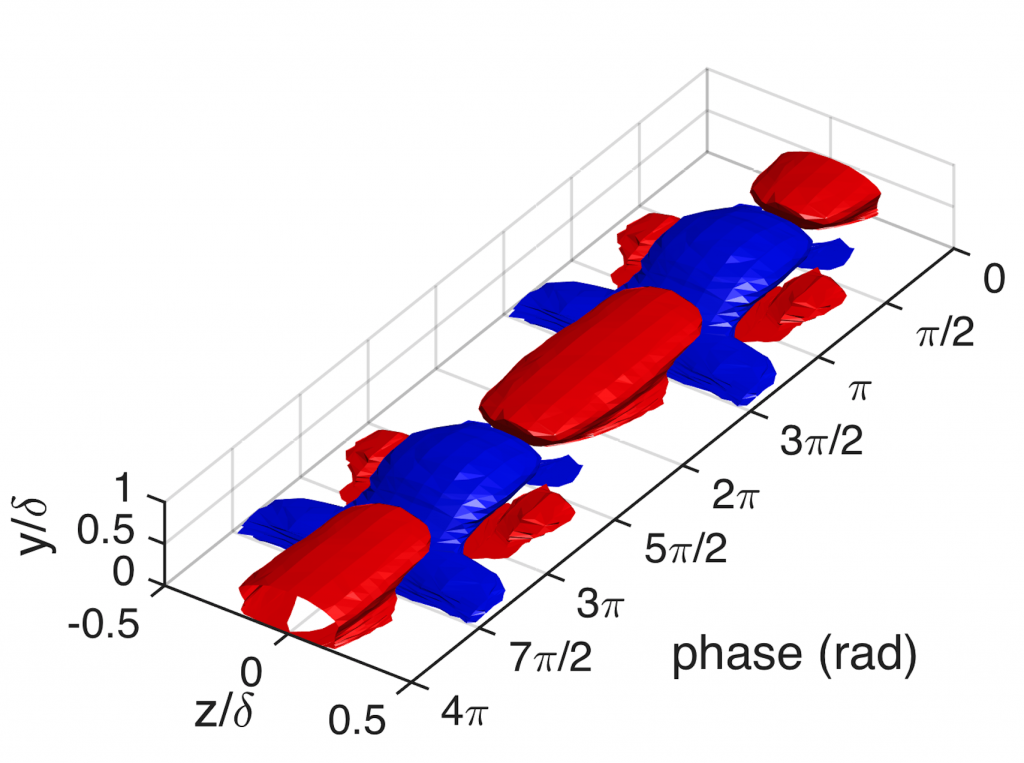Research
The purpose of the Fluid Mechanics and Flow Control (FMFC) Research Laboratory and long-term vision is the development and implementation of novel physics-based flow control technology for applications relevant to Canadian aeronautical and sport-based industries. Primarily, focus is on problems where boundary layers and flow separation play a key role.
Main areas of focus include:
- Wall Bounded Turbulence: Novel Control Methods
- Transient Growth and the Control of Bypass Transition
- Flow Separation and Unsteady Aerodynamics
Reducing aerodynamic drag will result in fuel savings, and is toward our social responsibility of environmental protection. The impact of the high-demand of non-renewable energy sources on our environment is undeniable. Canada has committed to reducing greenhouse gas emissions. Toward this objective, the FMFC Research Laboratory is focused on understanding, predicting and controlling flows to reduce drag within an experimental framework.

Velocity deficits and excess during dynamic actuation in a boundary layer.
The effectiveness of a fluidic or aerodynamic control system is inherently linked to the ability of an actuator to alter the flow to a desired state. Therefore, actuators are a critical enabling technology component in any active flow control system and arguably determine the technology readiness level for practical applications. Examples of flow actuators used by the FMFC Research Laboratory are plasma actuators (SDBD) and synthetic jets. Given the close nexus of these topics to ongoing research focuses, robust actuator development and novel diagnostics remain closely linked.
Aerodynamic drag also limits the potential performance of athletes. Competition is also a major source of Canadian economy and business. Aerodynamic performance gains will bolster the Canadian advantage for our industries in high-performance sports as key point to differentiate from. Competition also inspires camaraderie, perseverance, and the strength to break limits though Paralympic and Olympics events. In cycling, as an example, aerodynamic drag represents approximately 80-90% of the losses that the rider must overcome. At the 2012 Olympics the Canadian Women’s Team Pursuit captured bronze within a small margin of the gold. Potential for advances in drag reduction can bolster athlete performance.
